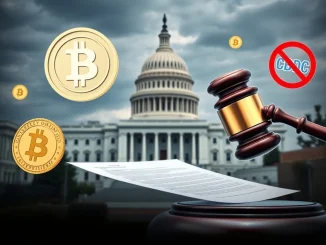
The world of finance continues its rapid evolution, and another nation is stepping into the digital age. For those tracking the progress of central bank digital currencies (CBDCs) and their potential impact on global finance, the latest news from South America is particularly noteworthy. Bolivia is reportedly preparing to unveil its own version of a national digital currency, tentatively dubbed the ‘virtual boliviano’. This move signals a significant step for the nation in embracing digital finance solutions.
What is Bolivia’s Plan for a Digital Currency?
According to reports, the Central Bank of Bolivia is actively developing a national digital currency, referred to as the ‘virtual boliviano’. This initiative is more than just a technological upgrade; it’s aimed at achieving specific economic objectives. A primary goal is to streamline and facilitate international payments, making cross-border transactions potentially faster and more efficient. Another key objective is to help preserve the nation’s foreign currency reserves, suggesting the digital currency could play a role in managing foreign exchange flows.
Central Bank President Edwin Rojas Ulo has indicated that the formal unveiling of this system is planned for a date of national significance: August 6th. This date coincides with Bolivia’s 200th independence anniversary, adding a symbolic layer to the launch of the Bolivia digital currency.
Why Develop a CBDC Like the Virtual Boliviano?
The global trend towards exploring and implementing Central Bank Digital Currency projects is driven by various factors. For Bolivia, the stated aims highlight key benefits:
- Facilitating International Payments: A digital boliviano could potentially reduce reliance on traditional correspondent banking networks, lowering costs and speeding up international transactions.
- Preserving Foreign Currency Reserves: By potentially offering a more attractive or efficient domestic digital option, the ‘virtual boliviano’ might help manage demand for foreign currencies for certain transactions, thus aiding in reserve preservation.
- Modernizing the Financial System: Moving towards a digital currency infrastructure can update the country’s financial backbone, potentially improving financial inclusion and transaction traceability.
The development process for CBDC Bolivia is not happening in isolation. The Central Bank is reportedly seeking guidance and collaboration from international organizations and central banks in neighboring countries. This collaborative approach is crucial for navigating the complex technical, legal, and economic considerations involved in launching a national digital currency.
When is the Launch Expected?
The target date for the unveiling of the ‘virtual boliviano’ system is August 6th, coinciding with Bolivia Independence Day. While an unveiling doesn’t necessarily mean immediate public rollout, it marks the formal presentation of the project and its details to the nation and the world. This timeline underscores the importance the Bolivian government places on this digital transformation initiative.
Conclusion: A Step Towards Digital Finance
Bolivia’s plan to launch the ‘virtual boliviano’ represents a significant step in its financial modernization journey. By aiming to leverage a national digital currency for enhancing international payments and safeguarding foreign reserves, the country joins a growing list of nations exploring the potential of CBDCs. The planned unveiling on Bolivia Independence Day will be a moment to watch for those interested in the future of digital finance and the evolving landscape of national currencies in the digital age.



